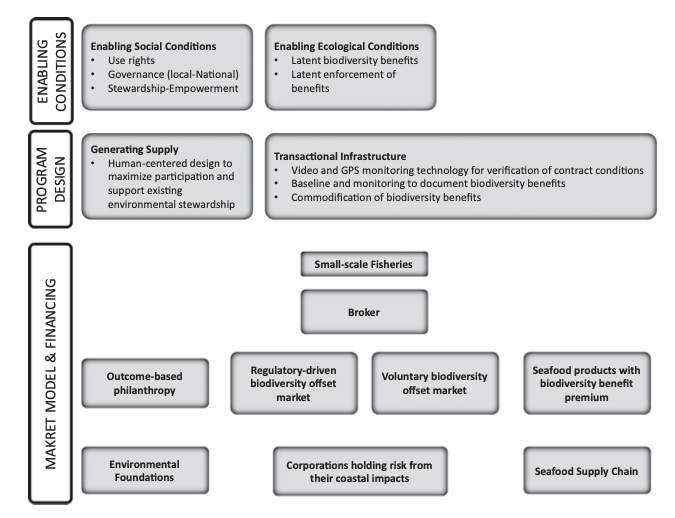ACS’s published a concept paper in the journal Conservation Biology that describes a TURF-reserve model with small-scale fisheries in central Chile. Using the program as a case study, Stefan Gelcich and Josh Donlan discuss the design of a market-based program aimed at improving fishers’ livelihoods while incentivizing the establishment and enforcement of no-take areas within areas managed within territorial user right regimes (TURFs). Building on explicit enabling conditions (i.e., high levels of governance, participation, and empowerment), ACS is using a place-based, human-centered approach to design a program that will have the necessary support and buy-in from local fishers to result in landscape-scale biodiversity benefits. Our market model, which we are now piloting in Chile with Shellcatch and Universidad Catolica de Chile, is a flexible foundation on which to base scalable opportunities to operationalize a scheme that incentivizes local, verifiable biodiversity benefits via conservation behaviors by fishers that could likely result in significant marine conservation gains and novel cross-sector alliances.
